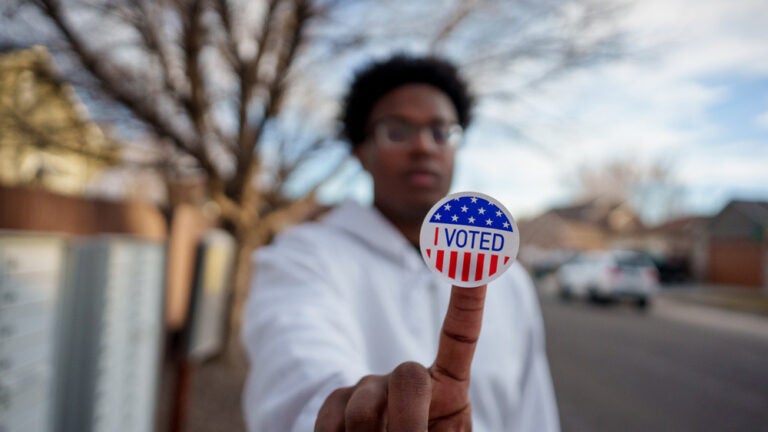
While the eligible voter populations of color in swing states grew substantially from 2010 to 2020, the study found these voters of color had consistently lower turnout rates compared to white, non-Latino voters during the 2020 election. (Photo: iStock)
New USC research reveals untapped potential for mobilizing voters of color in battleground states
New research by the Center for Inclusive Democracy at USC finds persistent low turnout for Latino, Asian-American and Black voters in all nine swing states. Boosting groups’ participation could be a gamechanger for the November election.
Contact: Dotty Deimer, dotty@ddk-communications.com or (562) 212-6014; Nina Raffio, raffio@usc.edu or (213) 442-8464
With swing states playing a pivotal role in the 2024 presidential election, new reports from the Center for Inclusive Democracy (CID) at the USC Price School of Public Policy have found significant voter turnout disparities between white, non-Latino voters and voters of color in all nine battleground states.
The reports highlight the persistent “voter representation gap,” where voters of color remain underrepresented at the polls, despite substantial population growth. If narrowed by November, the research concludes, this gap could significantly influence election results, particularly in swing states that had close election outcomes in 2020.
CID analyzed voter files from the 2020 general election for Latino, Black and Asian-American voters in Arizona, Florida, Georgia, Michigan, North Carolina, Nevada, Pennsylvania, Wisconsin and Texas. The study found that while the eligible voter populations of color in these swing states grew substantially from 2010 to 2020—outpacing the growth of the white, non-Latino population and often the general population—these voters of color had consistently lower turnout rates compared to white, non-Latino voters during the 2020 election.
“The huge number of eligible non-voters among communities of color in swing states presents an extraordinary opportunity for voter mobilization and engagement,” said Mindy Romero, founder and director of CID and the study’s lead author.
“Getting more voters of color to the polls could be transformational and have the potential to impact election outcomes in November,” said Romero, who is also a research assistant professor at USC Price. “Participation by these groups and all voters is foundational to our democratic values and processes.”
See individual briefs for each battleground state here. Notable findings in select states include:
- Arizona: More than 850,000 Asian-American, Black and Latino eligible voters did not cast a ballot in Arizona’s 2020 presidential election, where the margin of victory was only 10,457 votes.
- Florida: Asian-American, Black and Latino eligible voter populations represented more than one-third of Florida’s eligible voters in the 2020 general election, yet a sizeable number of these voters – 2.2 million – did not cast a ballot, a number nearly six times larger than the vote margin of victory in the state.
- Georgia: Even with a rapid growth in the eligible voter populations for Latinos, Blacks and Asian-Americans, more than 1.2 million did not vote in 2020, more than 100 times the margin of victory in the state.
Earlier this year, CID issued a national report on voter turnout. The New Electorate: The Strength of the Latino, Black and Asian-American Vote report revealed that in the 2020 presidential election, Asian-American, Black and Latino eligible voters comprised nearly 30% of those eligible to vote in the U.S., but represented just over 22% of all votes cast, significantly lower than their share of eligible voters. The report found this entrenched voter representation gap evident across nearly all U.S. elections.
###
(Photo/iStock)


